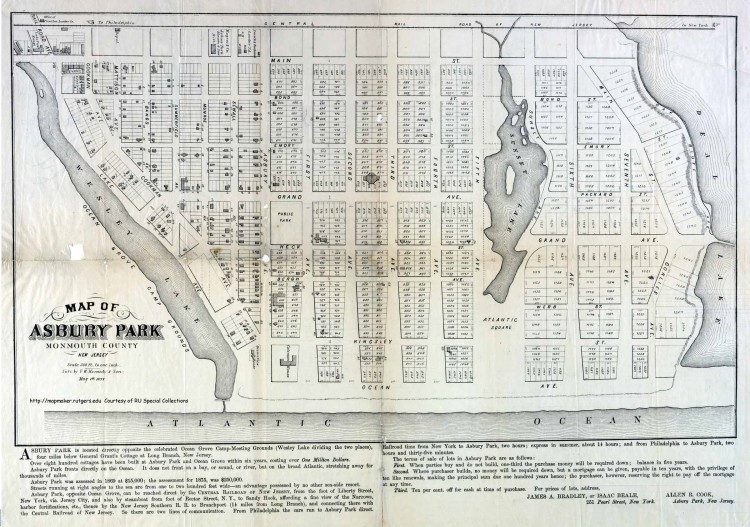
Why map factors related to COVID-19?
We know African Americans have been disproportionately impacted by the COVID-19 pandemic1, 2, 3. The threat of COVID-19 is particularly problematic in cities where communities of color are concentrated in a specific geographic area4, such as in the west side of Asbury Park, New Jersey. Because we are studying the African American community of Asbury Park, we decided to investigate the health disparities that may be impacting the community. What we learn from this work may be placed in a broader historical context of how contagious diseases have impacted the African American community of Asbury Park in the past.
The work here was supported by a forward-thinking grant opportunity awarded by Monmouth University’s Urban Coast Institute. The grant called for projects on a “Just and Sustainable Community Recovery after COVID-19.” We used a portion of the grant to support a Monmouth University student in mapping factors related to the COVID-19 pandemic in Asbury Park and the greater Monmouth County area. Because COVID-19 case data by race was not yet released by the State of New Jersey at the time of this project, we mapped factors that may be indicative of health disparities associated with COVID-19 in Monmouth County.
The work presented here is that of the Monmouth University student, Lissette E. Peña, and Lissette’s faculty supervisor, Geoffrey Fouad. We present maps of the United States Census Bureau’s American Community Survey of the year 20195 at the tract level (equivalent to about a neighborhood in a city) in Monmouth County. The maps show (A) percentage Black and white population, (B) percentage of the Black and white population below the poverty level, and (C) uninsured percentage of the Black and white population.
(A) Percentage Black and white population in Monmouth County (click the image to view a web map)
B) Percentage of the Black and white population below the poverty level in Monmouth County (click the image to view a web map)
(C) Uninsured percentage of the Black and white population in Monmouth County (click the image to view a web map)
References
- Stokes, E. K., Zambrano, L. D., Anderson, K. N., Marder, E. P., Raz, K. M., Felix, S. E. B., Yunfeng Tie, & Fullerton, K. E. (2020). Coronavirus Disease 2019 Case Surveillance – United States, January 22-May 30, 2020. MMWR: Morbidity & Mortality Weekly Report, 69(24), 759–765. https://doi.org/10.15585/mmwr.mm6924e2
- Price-Haywood, E.G., Burton, J., Fort, D., & Seoane, L. (2020). Hospitalization and mortality among black patients and white patients with COVID-19. The New England Journal of Medicine, 382, 2534-2543. https://doi.org/10.1056/NEJMsa2011686
- Millett, G. A., Jones, A. T., Benkeser, D., Baral, S., Mercer, L., Beyrer, C., Honermann, B., Lankiewicz, E., Mena, L., Crowley, J. S., Sherwood, J., & Sullivan, P. S. (2020). Assessing differential impacts of COVID-19 on black communities. Annals of Epidemiology, 47, 37-44. https://doi.org/10.1016/j.annepidem.2020.05.003
- Cordes, J., & Castro, M. C. (2020). Spatial analysis of COVID-19 clusters and contextual factors in New York City. Spatial and Spatio-temporal Epidemiology, 34, 100355. https://doi.org/10.1016/j.sste.2020.100355
- United States Census Bureau (2019). American Community Survey 5-Year Estimates. https://data.census.gov/cedsci/